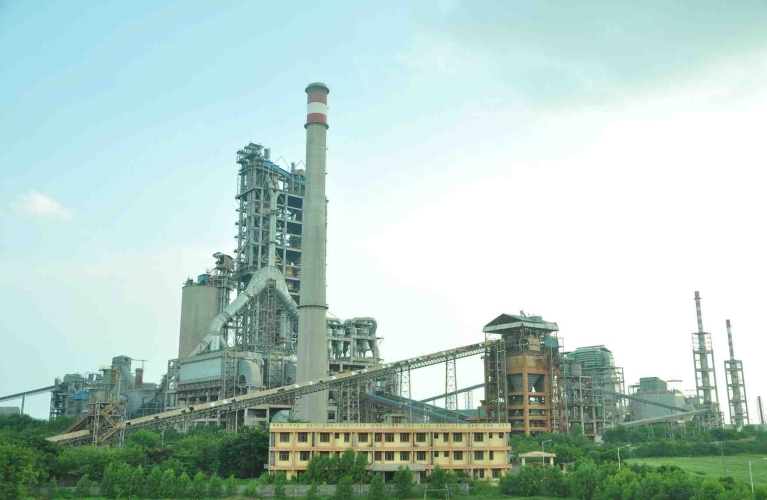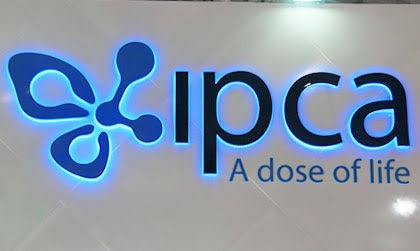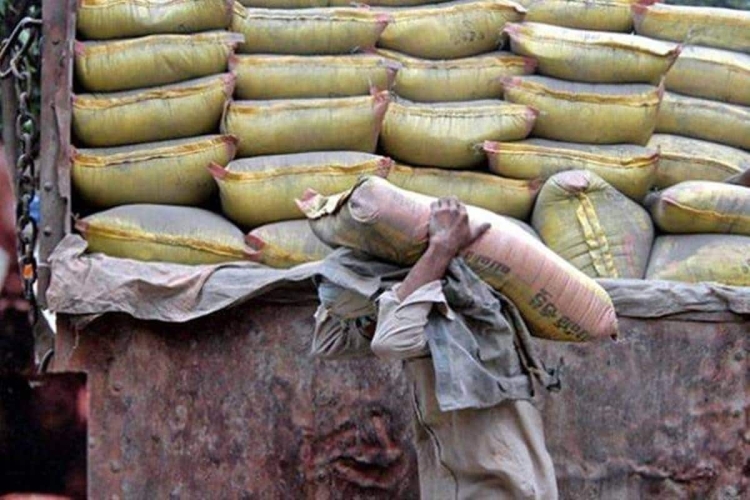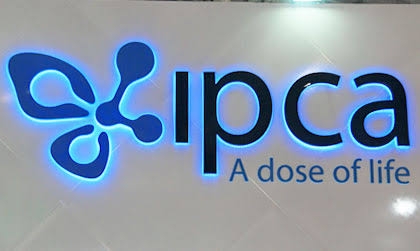lessons from the demise of India’s private airlines: Airline failures put a permanent blemish on the reputation of their promoters. But what really matters is the extent of damage such incidents cause to all stakeholders and taxpayers. Detecting weakness well in advance and taking measures to prevent collapses is the only solution. At the world’s largest biennial aviation trade fair, the Paris Air Show, plane maker Airbus had organised a gala event for top airline executives. In attendance were Jet Airways’ founder Naresh Goyal and Kingfisher Airlines’ Vijay Mallya. “Goyal and Airbus executives had a big fight to get the seat back, but Mallya didn’t budge,” recalls a former top Kingfisher Airlines’ executive who wished not to be named, adding, “He [Mallya] will do anything to get attention, even if it seems childish”. India’s aviation sector completed two decades since the launch of the country’s first low-cost airline, Air Deccan. In the industry’s extremely turbulent flight since then, three major airlines run by India’s biggest corporate barons — Mallya’s Kingfisher, Goyal’s Jet, and Nusli Wadia’s Go First — have all collapsed like a pack of cards. The failure of their flashy ventures leaves an indelible blemish on the reputation of business tycoons. But beyond that, what really matters is the extent of the damage such incidents cause. Data from multiple sources including court filings shows that the three private airlines mentioned above owe around INR50,000 crore to bankers, vendors, aircraft lessors, travel agents, employees, trainee pilots, and passengers. India’s aviation sector has grown from around 30 million in annual passenger traffic to around 200 million over the last two decades at an astronomical cost of over INR1 lakh crore — most of which is to be borne by taxpayers. Banks have recovered nearly INR7,000 crore from the full-service airline, which went belly up in 2012, since its promoter Mallya had given personal guarantees and money could be recovered by selling his shares and luxury properties including the iconic Kingfisher Villa in Goa. In the case of Jet Airways, which filed for bankruptcy at the National Company Law Tribunal (NCLT) in 2019, banks are likely to get only around INR400 of the nearly INR8,000 crore lent. That means a haircut of nearly 95%, mostly to taxpayer-funded banks including SBI, Yes Bank, Punjab National Bank, IDBI Bank, Canara Bank, and Bank of India. In the case of Jet Airways, too, the tax deducted at source was not deposited for a few months before it went bankrupt. From the 1990s onwards, there is a big list of airlines that have gone down. It’s all cash flow-based lending since airlines have no assets… If an airline goes bankrupt, banks can’t do anything. They should be very careful. Not everyone is a Tata or an Air India",says Rajnish, Kumar,former chairman,SBI. source:et
US market prospects for Indian pharma: Over the last few years, price erosion and compliance issues had turned the US into a challenging market for Indian pharma companies. But the tide has turned. Drug shortages have curbed price erosion, and the launch of some key generic drugs has helped Indian companies regain lost ground. But is this sustainable? US business of Indian pharmaceutical companies has a optimism keysight . Once deemed as a big opportunity and a promising market, the US had become a drag on Indian companies in the last few years due to high price erosion and compliance issues. But the situation has been improving. leading Indian generic drug makers, which have a significant presence in the US market, posted strong growth in US sales. Most of them have seen an upward trajectory in their US business growth over the last three to four quarters. This has cheered investors. Pharma stocks have done well this year. Besides better US sales, good growth in the domestic market and moderating input costs have helped improve market sentiment. In the past one year, the Nifty Pharma index has risen 19.5%, beating the benchmark Nifty 50, which gained 11.8%. In the last three months too, the Nifty Pharma, which gained 14.4%, outperformed Nifty 50, which rose 5%.In the past one year, the Nifty Pharma index has risen 19.5%, beating the benchmark Nifty 50, which gained 11.8%. In the last three months too, the Nifty Pharma, which gained 14.4%, outperformed Nifty 50, which rose 5%. In the US generic-drugs business, the base product portfolio witnesses price erosion, which needs to be offset and over-compensated by new product launches. “In this quarter (Q1 FY24), we observed that multiple generic companies, both Indian and international, are seeing a better environment in the US generic market as buyers get more concerned about ensuring adequate supply of drugs over price negotiations,” the analysts at Bernstein said. A key product that is supporting growth of many companies such as Dr. Reddy’s, Cipla, Zydus Lifesciences, and Sun Pharma is the generic version of blockbuster drug Revlimid, used in blood cancer treatment. Aurobindo Pharma is also likely to launch its generic Revlimid next month. source:et
चीन अपने मेगा सौर-से-हाइड्रोजन संयंत्र के रूप में अपने हरित हाइड्रोजन प्लांट को आगे बढ़ा रहा: मेगा कूका संयंत्र से हर साल 20,000 टन हरित हाइड्रोजन का उत्पादन होने की उम्मीद है। इसका कमीशन एक महत्वपूर्ण विकास है क्योंकि यह पहली बार है कि किसी चीनी कंपनी ने बड़े पैमाने पर हाइड्रोजन का उत्पादन करने के लिए सौर ऊर्जा का उपयोग किया है। सिनोपेक झिंजियांग कुका ग्रीन हाइड्रोजन पायलट प्रोजेक्ट ने अपने इन-हाउस सौर ऊर्जा स्टेशन को ग्रिड से जोड़ने के बाद झिंजियांग उइघुर स्वायत्त क्षेत्र में पूर्ण परिचालन में प्रवेश किया, चाइना पेट्रोलियम एंड केमिकल कार्पोरेशन, या प्लांट के संचालक सिनोपेक ने 30 अगस्त को घोषणा की। सिनोपेक ने दावा किया कि यह दुनिया की सबसे बड़ी सौर-से-हाइड्रोजन परियोजना है और चीन में इतने बड़े पैमाने पर संचालित होने वाली अपनी तरह की पहली परियोजना है। इसे स्टील और रसायन जैसे भारी उद्योगों के वैश्विक ग्रीनहाउस गैस उत्सर्जन को कम करने के लिए बिल्डिंग ब्लॉक्स में से एक माना जाता है, क्योंकि ईंधन जलने पर केवल पानी उत्सर्जित करता है लेकिन उच्च तापमान वाली गर्मी पैदा करता है जो औद्योगिक प्रक्रियाओं को शक्ति प्रदान कर सकता है। अंतर्राष्ट्रीय नवीकरणीय ऊर्जा एजेंसी (आईआरईएनए) ने कहा, "दुनिया भर में विशाल हरित हाइड्रोजन क्षमता मौजूद है, जो 2050 में वैश्विक प्राथमिक ऊर्जा मांग से 20 गुना से अधिक के बराबर है।" तुलनात्मक रूप से, 80% से अधिक हाइड्रोजन जीवाश्म ईंधन द्वारा उत्पादित किया गया था, एसोसिएशन ने नोट किया, 62% कोयले द्वारा और 19% गैस द्वारा बनाया गया था। IRENA के अनुसार, वैश्विक स्तर पर, समग्र हाइड्रोजन उत्पादन में हरित हाइड्रोजन का प्रतिशत भी 2021 में लगभग 1% था। सिनोपेक के अनुसार, कूका संयंत्र, जिसमें 900 फुटबॉल मैदानों के आकार का एक सौर फार्म है, हर साल लगभग 485,000 टन कार्बन डाइऑक्साइड उत्सर्जन से बचने में मदद कर सकता है। उन्होंने कहा कि यह हरित हाइड्रोजन को नवीकरणीय-प्रचुर पश्चिम चीन से देश के ऊर्जा-भूखे पूर्व तक ले जाने में सक्षम बनाने वाला एक महत्वपूर्ण कदम है। सिन्हुआ समाचार एजेंसी द्वारा उद्धृत योजना के अनुसार, 2035 तक, हरित हाइड्रोजन चीन के हरित ऊर्जा संक्रमण में "एक महत्वपूर्ण सहायक भूमिका निभाएगा" और अंतिम उपयोग ऊर्जा खपत में इसका अनुपात "काफी बढ़ जाएगा"। source:et
हरित सीमेंट के लिए ठोस योजना: अल्ट्राटेक और डालमिया आगे बढ़े: भारत की सबसे बड़ी सीमेंट उत्पादक कंपनी अल्ट्राटेक ने कार्बन उत्सर्जन में कटौती के लिए अपनी तरह की पहली पहल शुरू की है। कंपनी ने अपने सीमेंट संयंत्र में उपयोग के लिए 57,000 मीट्रिक टन (लगभग 1,000 ट्रक लोड) औद्योगिक कचरे का पुनर्उपयोग करने का निर्णय लिया। कंपनी की FY23 वार्षिक रिपोर्ट में कहा गया है कि इस कदम ने 57,000 मीट्रिक टन (MT) फॉस्फोजिप्सम से भरे थोक कार्गो वाहक के परिवहन के लिए समुद्री और अंतर्देशीय जलमार्ग दोनों का उपयोग करके नवाचार का प्रदर्शन किया। उन्होंने कहा, "इसे ओडिशा के पारादीप बंदरगाह से गुजरात के अमरेली जिले के कोवाया में अल्ट्राटेक की जेटी तक सुरक्षित ले जाया गया।" पानी के बाद निर्माण में सीमेंट सबसे अधिक उपयोग की जाने वाहरित सीमेंट के लिए ठोस योजना: अल्ट्राटेक और डालमिया आगे बढ़े भारत की सबसे बड़ी सीमेंट उत्पादक कंपनी अल्ट्राटेक ने कार्बन उत्सर्जन में कटौती के लिए अपनी तरह की पहली पहल शुरू की है। कंपनी ने अपने सीमेंट संयंत्र में उपयोग के लिए 57,000 मीट्रिक टन (लगभग 1,000 ट्रक लोड) औद्योगिक कचरे का पुनर्उपयोग करने का निर्णय लिया। कंपनी की FY23 वार्षिक रिपोर्ट में कहा गया है कि इस कदम ने 57,000 मीट्रिक टन (MT) फॉस्फोजिप्सम से भरे थोक कार्गो वाहक के परिवहन के लिए समुद्री और अंतर्देशीय जलमार्ग दोनों का उपयोग करके नवाचार का प्रदर्शन किया। उन्होंने कहा, "इसे ओडिशा के पारादीप बंदरगाह से गुजरात के अमरेली जिले के कोवाया में अल्ट्राटेक की जेटी तक सुरक्षित ले जाया गया।" पानी के बाद निर्माण में सीमेंट सबसे अधिक उपयोग की जाने वाली सामग्री है। यह इस बहुमुखी सामग्री पर हमारी निर्भरता को दर्शाता है, जो लोहे और स्टील के बाद दुनिया में कार्बन डाइऑक्साइड (सीओ2) का सबसे बड़ा उत्सर्जक है। अंतर्राष्ट्रीय ऊर्जा एजेंसी (IEA) के अनुमान के अनुसार, भारत का सीमेंट उद्योग विश्व औसत की तुलना में तेज़ दर से बढ़ रहा है। सीमेंट उत्पादन में अनुमानित वृद्धि कई चुनौतियाँ पेश करती है, खासकर जब से जलवायु परिवर्तन पर वैश्विक स्तर पर बढ़ती चिंताओं के बीच देश ने 2070 तक शुद्ध-शून्य उत्सर्जन प्राप्त करने के लिए प्रतिबद्ध किया है। महत्वपूर्ण बात यह है कि भारत में, सीमेंट की वार्षिक प्रति व्यक्ति खपत 240 किलोग्राम है, इस क्षेत्र को हरित बनाने की तत्काल आवश्यकता है। उदाहरण के लिए, अल्ट्राटेक, जिसने वित्त वर्ष 2013 में 100 मिलियन टन सीमेंट बेचा, जो वित्त वर्ष 2012 से 12% अधिक है, ने 2050 तक कार्बन न्यूट्रल होने की प्रतिबद्धता जताई है। डालमिया भारत, उद्योग के हरित परिवर्तन में योगदान देने वाले उत्पाद नवाचारों पर काम कर रहा है। इसमें वैकल्पिक बाइंडरों के उपयोग की खोज करना और सीमेंट में क्लिंकर सामग्री को कम करने के लिए पूरक सीमेंटिटियस को शामिल करना शामिल है। “भारत में निर्माण उद्योग कई वर्षों से पारंपरिक सीमेंट का आदी रहा है। परिवर्तन का विरोध निर्माण पेशेवरों और उपभोक्ताओं दोनों की ओर से है, जो पारंपरिक सीमेंट से अधिक परिचित हैं। इस पर काबू पाने और मिश्रित सीमेंट में परिवर्तन को प्रोत्साहित करने के लिए प्रभावी शिक्षा और प्रचार प्रयासों की आवश्यकता है। उदाहरण के लिए, सरकारी निविदाएं अभी भी साधारण पोर्टलैंड सीमेंट मांगती हैं, ”अरविंद बोधनकर, कार्यकारी निदेशक - पर्यावरण, सामाजिक और शासन, और मुख्य जोखिम अधिकारी, डालमिया भारत कहते हैं। यह भारत की सबसे बड़ी बहुमुखी सामग्री है। इस बहुमुखी सामग्री पर हमारी निर्भरता को दर्शाता है, जो लोहे और स्टील के बाद दुनिया में कार्बन डाइऑक्साइड (सीओ2) का सबसे बड़ा उत्सर्जक है। अंतर्राष्ट्रीय ऊर्जा एजेंसी (IEA) के अनुमान के अनुसार, भारत का सीमेंट उद्योग विश्व औसत की तुलना में तेज़ दर से बढ़ रहा है। सीमेंट उत्पादन में अनुमानित वृद्धि कई चुनौतियाँ पेश करती है, खासकर जब से जलवायु परिवर्तन पर वैश्विक स्तर पर बढ़ती चिंताओं के बीच देश ने 2070 तक शुद्ध-शून्य उत्सर्जन प्राप्त करने के लिए प्रतिबद्ध किया है। “भारत में निर्माण उद्योग कई वर्षों से पारंपरिक सीमेंट का आदी रहा है। परिवर्तन का विरोध निर्माण पेशेवरों और उपभोक्ताओं दोनों की ओर से है, जो पारंपरिक सीमेंट से अधिक परिचित हैं। इस पर काबू पाने और मिश्रित सीमेंट में परिवर्तन को प्रोत्साहित करने के लिए प्रभावी शिक्षा और प्रचार प्रयासों की आवश्यकता है। उदाहरण के लिए, सरकारी निविदाएं अभी भी साधारण पोर्टलैंड सीमेंट मांगती हैं, ”अरविंद बोधनकर, कार्यकारी निदेशक - पर्यावरण, सामाजिक और शासन, और मुख्य जोखिम अधिकारी, डालमिया भारत कहते हैं। source:et
आईपीसीए लेबोरेटरीज के शेयरों में शीर्ष पर रहने की संभावना: आईपीसीए फार्मा स्टॉक 1-2 महीने में 1000 रुपये के स्तर को पार करने की संभावना है आईपीसीए प्रयोगशालाएँ पिछले 18 वर्षों में, केवल 1.9% ट्रेडिंग से, फार्मा उद्योग का एक हिस्सा, सितंबर में 20% से अधिक बढ़कर 52-सप्ताह के उच्चतम स्तर पर पहुंच गया है और चार्ट पैटर्न से पता चलता है कि रैली अभी खत्म नहीं हो सकती है स्टॉक 20 जून को 731 रुपये से बढ़कर 20 सितंबर को 913 रुपये पर पहुंच गया, जो 3 महीनों में 24% की बढ़ोतरी दर्शाता है। 18 सितंबर को यह 954 रुपये के 52-सप्ताह के नए उच्चतम स्तर पर पहुंच गया, लेकिन इसके बाद इसमें कुछ मुनाफावसूली देखी गई, जो मोटे तौर पर व्यापक बाजारों में देखी गई प्रवृत्ति के अनुरूप थी। ऐसा लगता है कि स्टॉक ने 650 रुपये के स्तर से ऊपर एक मजबूत आधार बना लिया है। 22 मई को यह 670 रुपये के 52-सप्ताह के निचले स्तर पर पहुंच गया, जहां से इसमें तेजी से वापसी हुई। मूल्य कार्रवाई के संदर्भ में, स्टॉक दैनिक चार्ट पर अधिकांश महत्वपूर्ण लघु और दीर्घकालिक चलती औसत जैसे 5,10,30,50,100 और 200-डीएमए से काफी ऊपर कारोबार कर रहा है। दैनिक सापेक्ष शक्ति सूचकांक (आरएसआई) 59.4 पर है। ट्रेंडलाइन डेटा से पता चलता है कि 30 से नीचे आरएसआई को ओवरसोल्ड माना जाता है और 70 से ऊपर को ओवरबॉट माना जाता है। एसएमसी ग्लोबल के वरिष्ठ तकनीकी विश्लेषक शितिज गांधी ने कहा, "आईपीसीए लेबोरेटरीज का स्टॉक पिछले दो वर्षों से दबाव में कारोबार कर रहा है और कुछ हफ्ते पहले, मई 2023 के महीने में स्टॉक 52-सप्ताह के निचले स्तर 669.80 रुपये पर पहुंच गया था।" प्रतिभूति, ने कहा। इसलिए, कोई भी व्यक्ति अगले 5-7 सप्ताह में 1080 रुपये के ऊपरी लक्ष्य के लिए मौजूदा स्तर से स्टॉक खरीद सकता है, जिसमें समापन आधार पर 830 रुपये के स्तर से नीचे का स्टॉप लॉस हो,'' उन्होंने सिफारिश की। source:et
6 largecap stocks from different sectors with upside potential of up to 32% The markets are in corrective mode, if one looks at the markets breadth it is not as bad as it normally is when such corrective moves have happened in the early part 2023. Refinitiv’s Stock Report Plus applies different algorithms & filters to all BSE and NSE stocks, and lists stocks which fulfill the various criteria as specified into the algorithms & filters to find those which might help navigate the stock market. The nifty and sensex has been witnessing for the last seven weeks was finally felt by the large majority of stock last Tuesday. This week once again markets are in corrective moves and unlike in the past when mid and small caps were able to keep their head above water, even some part of the mid-cap markets have slipped sharply. We take a look at stocks which have shown outperformance in the phase of volatility in the nifty of the last few weeks. Outperformance can be measured in a couple of ways: either the stock has not fallen as much as the Nifty or it has been able to move up even if the index has slipped southward and when Nifty witnessed a recovery, it was among the first to gain. Below is a list containing stocks which in the past 1 month gave positive stock returns; had their latest average SR+ score improve by at least 1 point month on month, had a positive Upside Potential and a rating of “Strong Buy” or “Buy”. Will these stocks move up faster when the market recovers on a sustained basis is something to watch out for. Large Cap Stocks with Score Improvement Month on Month Upside Potential - Sep 21, 2023 MISSING: summary MISSING: current-rows. MISSING: sort-direction / descending MISSING: sort-column Company Name Latest Avg Score Avg Score 1M ago Reco Analyst Count Upside Potential % 1M Return % Inst Stake % Market Cap Rs Cr Prestige Estates Projects 7 6 Strong Buy 18 32.8 7.8 25.4 24,078 Star Health & Allied Insurance 7 6 Buy 19 28.0 0.7 13.6 36,377 Carborundum Universal 7 6 Buy 11 27.4 6.6 37.1 22,048 Solar Industries India 10 9 Buy 7 23.8 5.7 19.6 41,588 Bank of Baroda 10 9 Buy 31 21.8 11.4 20.7 110,434 Max Healthcare Institute 7 6 Buy 13 20.9 3.9 56.0 53,898 Calculated from highest price target given by analysts source:et
China steps up its green hydrogen game as its mega solar-to-hydrogen plant: The mega Kuqa plant is expected to produce 20,000 tons of green hydrogen every year. Its commission is a significant development as this is the first time a Chinese company has used solar power to produce hydrogen on a large scale. The Sinopec Xinjiang Kuqa Green Hydrogen Pilot Project entered full operation in the Xinjiang Uyghur autonomous region after its in-house solar power station was connected to the grid, China Petroleum & Chemical Corp., or Sinopec, the plant’s operator, announced on Aug. 30. It is the largest solar-to-hydrogen project in the world and the first of its kind to operate at such a scale in China, Sinopec claimed. It is considered one of the building blocks for slashing the global greenhouse gas emissions of heavy industries, such as steel and chemicals, because the fuel only emits water when burned but produces high-temperature heat that can power industrial processes. “Vast green hydrogen potential exists around the world, equating to more than 20 times global primary energy demand in 2050,” the International Renewable Energy Agency (IRENA) said. By comparison, more than 80% of the hydrogen was produced by fossil fuel, the association noted, with 62% made by coal and 19% by gas. Globally, the percentage of green hydrogen in overall hydrogen output was also about 1% in 2021, according to the IRENA. The Kuqa plant, which has a solar farm the size of 900 soccer fields, can help avoid carbon dioxide emissions of around 485,000 tons every year, according to Sinopec. It is also a vital step enabling green hydrogen to be transported from renewable-abundant west China to the country’s energy-hungry East, he said. By 2035, green hydrogen will “play an important supporting role” in China’s green energy transition and its proportion in end-use energy consumption “will increase significantly,” according to the plan cited by the Xinhua News Agency. source:et
Concrete Plan for green cement,Ultratech and Dalmia push ahead: India’s biggest cement producer, UltraTech, embarked upon a first-of-its-kind initiative to cut carbon emissions. The company decided to repurpose 57,000 metric tonne (around 1,000 truckloads) industrial waste to be utilised in its cement plant. The company’s FY23 annual report that the move showcased innovation by utilising both sea and inland waterways to transport a bulk cargo carrier loaded with 57,000 metric tonne (MT) phosphogypsum. “It was safely moved from the Paradip port in Odisha to UltraTech’s jetty in the Amreli district’s Kovaya in Gujarat,” he added. Cement is the most used material in construction after water. This shows our dependence on this versatile material, the largest emitter of carbon dioxide (CO2) in the world after iron and steel. According to the International Energy Agency’s (IEA) estimates, India’s cement industry is seen expanding at a faster rate than the world average. The projected rise in cement production poses several challenges, especially since the country has committed to achieving net-zero emission by 2070 amid growing concerns globally over climate change. Importantly in India, with the annual per-capita consumption of cement standing at 240kg, there is an urgent need to green the sector. For instance, UltraTech, which sold 100 million tonnes of cement in FY23, up 12% from FY22, has committed to go carbon neutral by 2050. Dalmia Bharat, has been working on product innovations contributing to the green transition of the industry. This includes exploring the use of alternative binders and incorporating supplementary cementitious to reduce the clinker content in cement. “The construction industry in India has been accustomed to traditional cement for many years. There is resistance to change, both from construction professionals and consumers, who are more familiar with conventional cement. Overcoming this and encouraging the transition to blended cement requires effective education and promotion efforts. For example, government tenders still ask for ordinary Portland cement,”says Arvind Bodhankar, executive director – environment, social, and governance, and chief risk officer, Dalmia Bharat. source:et
IPCA Laboratories:likely to Top: This pharma stock is likely to top Rs 1000 levels in 1-2 months In the last 18 years, only 1.9 % trading se, a part of the pharma industry, has rallied over 20% to hit a fresh 52-week high in September. The stock rose from Rs 731 on 20 June to Rs 913 recorded on 20 September, which translates into an upside of 24% in 3 months. It hit a fresh 52-week high of Rs 954 on 18 September but witnessed some profit-taking thereafter, largely in line with the trend seen in broader markets. The stock seems to have formed a strong base above Rs 650 levels. It hit a 52-week low of Rs 670 on 22 May from where it bounced back sharply. In terms of price action, the stock is trading well above most of the crucial short- and long-term moving averages such as 5,10,30,50,100 and 200-DMA on the daily charts. The daily Relative Strength Index (RSI) is at 59.4. RSI below 30 is oversold and above 70 is considered overbought, Trendlyne data showed. “IPCA Laboratories stock has been trading under pressure for the last two years and a few weeks ago, the stock hit its 52-week low of Rs 669.80 as well in the month of May 2023,” Shitij Gandhi, Senior Technical Analyst, SMC Global Securities, said. Therefore, one can buy the stock from current levels, for the upside target of Rs 1080 levels in the next 5-7 weeks, with a stop loss below Rs 830 levels on a closing basis,” he recommended. source:et









Sep 23 2023, 10:36
- Whatsapp
- Facebook
- Linkedin
- Google Plus
1